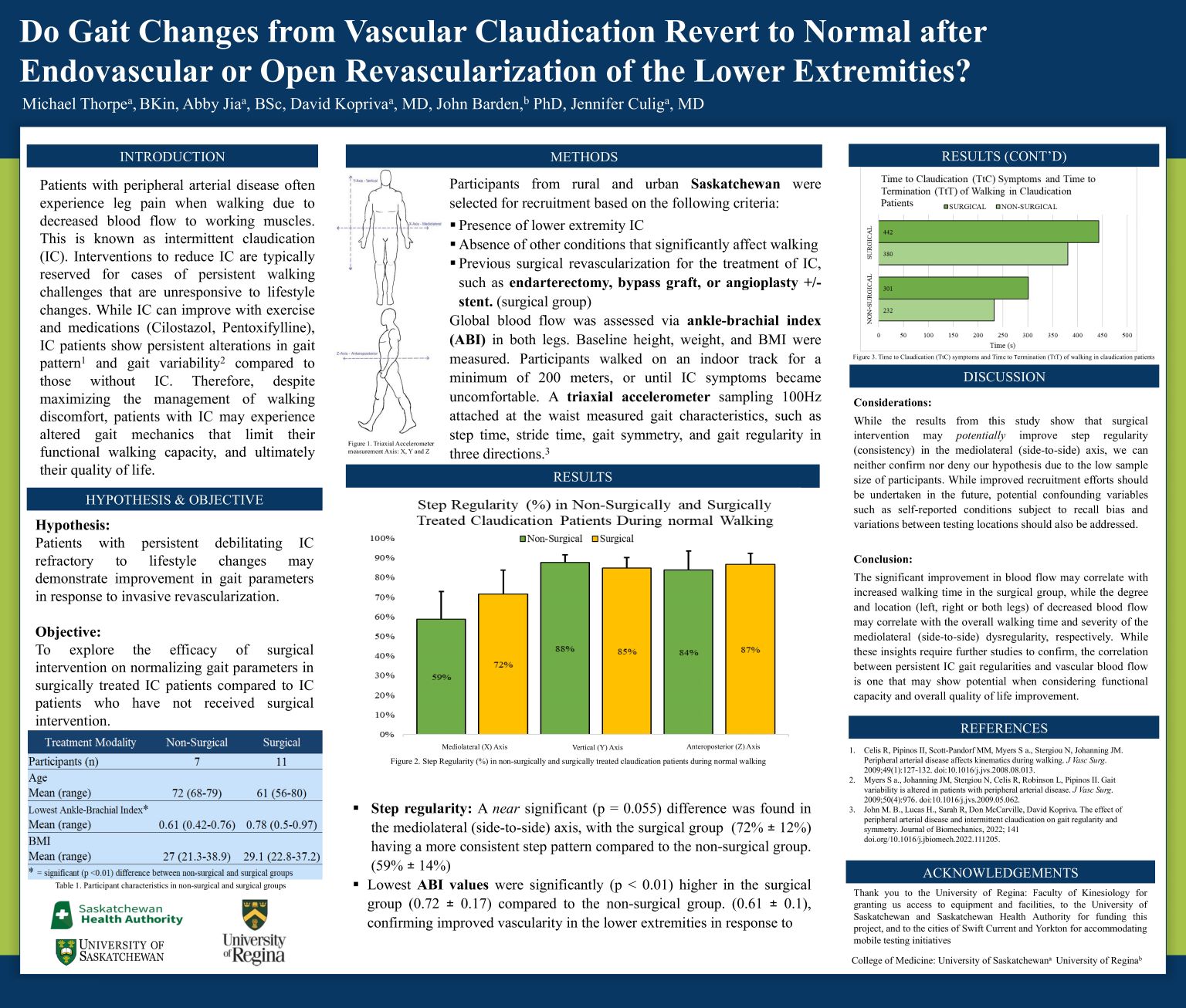
Do Gait Changes from Vascular Claudication Revert to Normal after Endovascular or Open Revascularization of the Lower Extremities?
Michael Thorpe
Despite optimal medical treatment and improved lifestyle factors, patients with intermittent claudication (IC) continue to demonstrate altered gait patterns1,2, limiting their functional capacity. This study aimed to assess the efficacy of surgical interventions for IC in improving gait parameters in IC patients compared to IC patients with non-surgical
interventions. Participants from Saskatchewan were retrospectively recruited based on having IC symptoms and no gait-altering conditions (non-surgical) or receiving surgery to treat IC and having no gait-altering conditions (surgical). Lower limb blood flow was assessed using ankle-brachial index. Height, weight and BMI were measured. Gait characteristics such as step time, symmetry and regularity were measured using a triaxial accelerometer attached to participants at the posterior waist while walking on a 200-meter track as previously described3. Results indicated a near-significant (p = 0.055) improvement in step regularity in the X-axis in the surgical group compared to the non-surgical group, and significant (p < 0.01) improvements in ABI values were found in the surgical group consistent surgical interventions. Despite these findings, the low sample size limits conclusions regarding the efficacy of surgical intervention on normalizing gait patterns. Further studies should focus on improving recruitment and controlling for confounders related to patient self-reporting.
